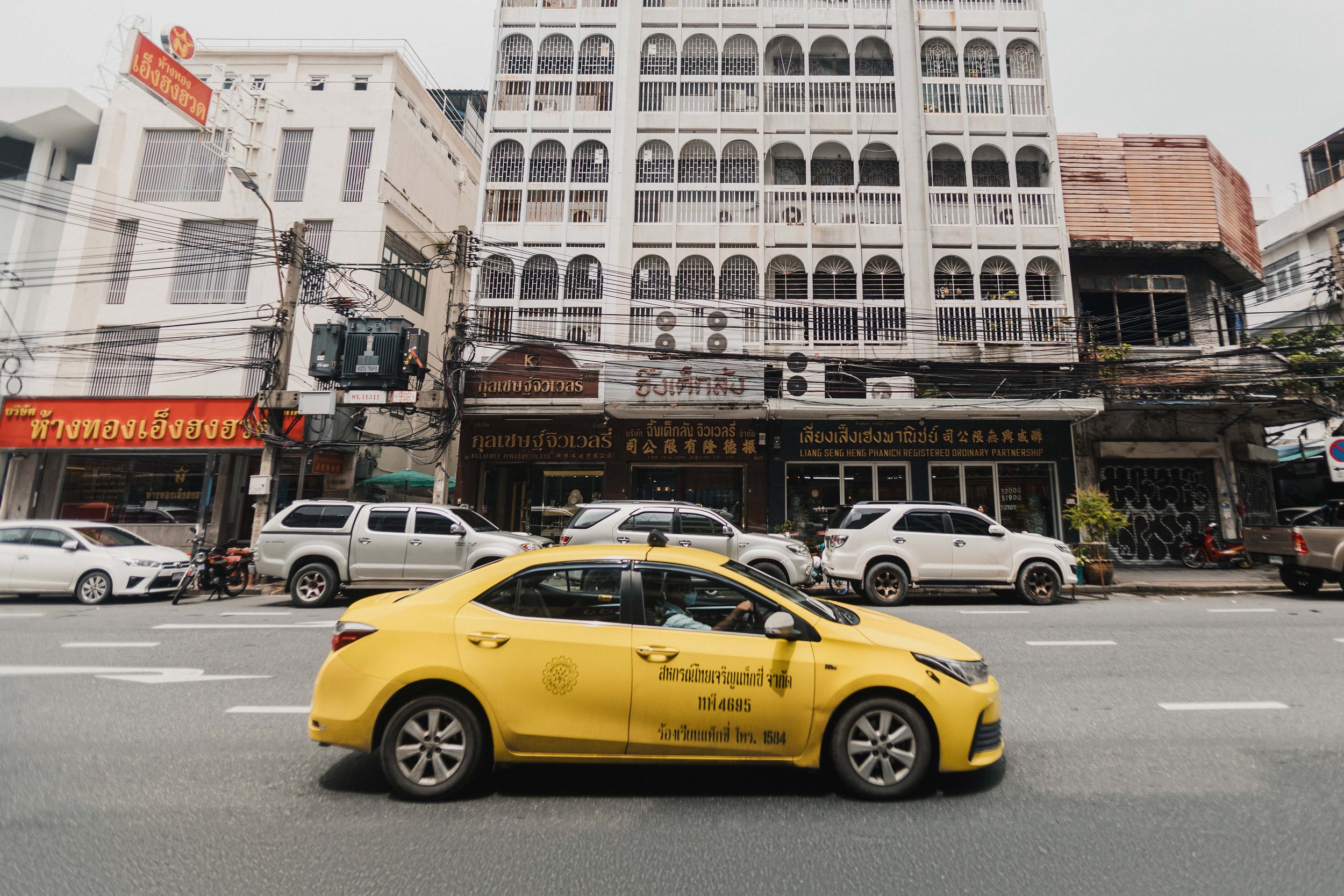Bangkok Transportation Guide: How to Easily Navigate the City
Discover how to get around Bangkok with ease! In this complete guide, you'll learn how to use the BTS, metro, taxis, tuk-tuks, and much more. Practical tips for navigating Bangkok’s transportation system to save time and money during your trip to the Thai capital.
Navigate Bangkok Like a Local: Ultimate Transportation Guide
Bangkok is a large city, and it can also feel a bit chaotic for those who aren't used to it. The good news is that the city offers several transportation options that, once understood, make the traveler’s life much easier. I’ll explain each of these transportation methods, with practical tips to help you get around without stress. If you want to see it in action, check out the video on transportation in Bangkok on YouTube.
1. TRANSPORTATION APPS: GRAB, BOLT, AND INDRIVE
If you’re used to using Uber, in Bangkok you’ll have three similar options: Grab, Bolt, and InDrive. Grab is the most popular, safe, and easy to use. You can pay by card, and it works like Uber, with the option to call cars, taxis, vans, tuk-tuks, and even motorcycle taxis, which are great for quick and short trips. Uber is not available in Bangkok.
If you want to save money, Bolt might be a cheaper option, but it’s harder to find cars in Bangkok. InDrive allows you to negotiate the price directly with the driver, but it only accepts cash, so it’s a good idea to always have some bahts on hand.
GRAB: More cars available, the option to request Grab Ladies (female drivers), SUVs for more luggage, vans for larger groups, and motorbike or tuk-tuks for short distances. It also works as a delivery service. Payment can be made via a card registered in the app (Wise, Nomad, Revolut, etc.).
BOLT: Same app as used in Europe. It’s cheaper but may require more patience to get a car. Payment can be made via a card registered in the app (Wise, Nomad, Revolut, etc.).
INDRIVE: Functions like a ride-sharing app where you offer a price for the ride, and payment is only in cash.
Important about tolls: If the driver uses toll roads and you are paying by card, the toll will be added to the fare at the end, and you’ll receive the information in your email.
Tip: Register your card while still in your country to make it easier and avoid issues. Remember to disable location services before registering.
HOW TO REGISTER YOUR CARD ON GRAB FROM YOUR COUNTRY:
1. Install the Grab app
2. Go to your phone’s settings
3. Disable general location services (not the app's, but the phone’s)
4. Register your card in the Grab app (you’ll receive a confirmation SMS)
5. Go back to your phone’s settings and re-enable location services.
Planning your trip? Check out our complete 3-day guide to Bangkok!
NO UBER IN BANGKOK
Uber doesn’t work in Bangkok or anywhere in Thailand. Use Grab and Bolt, which work the same way.
2. TAXIS: ALWAYS WITH A METER!
Taxis in Bangkok are super colorful and easy to find, but it’s crucial to ensure the driver turns on the meter! Never negotiate the price; always ask for the "meter". If the driver refuses, find another taxi. The meter starts at 35 baht.
Peak hours: Avoid taking taxis during rush hours (7am-9am and 5pm-7pm) as traffic is intense, and rides may take much longer. If possible, use the metro or skytrain!
Important regarding the airport: If you use a taxi to/from the airport, you’ll need to add the meter fare + tolls + airport fee.
Tip: Use Google Maps to track your trip.
3. TUK-TUKS: THE THAI EXPERIENCE
No trip to Bangkok is complete without a ride in a tuk-tuk. It’s a classic mode of transport, but be prepared to pay more. A good tip is to check the fare for the same route in the Grab app and use that as a base to negotiate with the tuk-tuk driver. Payment is in cash.
Tip: Try this ride at night when the heat subsides, and the city takes on a special atmosphere. There are two tuk-tuk tours in Bangkok: the Bangkok Night Tuk-Tuk Tour (Chinatown, Khao San, and Temples) and the Bangkok Chinatown Food Tour by Tuk-Tuk.
4. BUSES: ECONOMICAL, BUT CONFUSING
Bangkok’s bus system can be a challenge, but with ViaBus, an app that shows routes and schedules, it becomes much easier.
There are two main types of buses: the cheaper, older ones that feel like a trip back in time, with wooden floors and ceiling fans, and the more modern air-conditioned ones. Payment is made directly to the conductor. Just tell or show them your destination.
Local Tip: For short distances, the simpler buses can be a unique (and super cheap!) experience.
5. METRO (MRT): EFFICIENT AND CONNECTED
Bangkok’s metro (MRT) is an excellent option for getting around central areas, such as markets and temples. It connects to the Skytrain (BTS) and the Rail Link, allowing access to many key areas of the city. Payment can be made at ticket counters, machines (which accept bills), or via contactless with Wise.
GOING ON A TRIP? THEN BOOK HERE!
Did you know that when you make a booking using the blog’s link, we receive a small commission? You don’t pay anything extra, you get discounts, and you help the Eduardo and Mônica blog produce complete and quality articles.
Help the blog that helps you!
• Accommodation: Booking.com
• Tours and Tickets: Get Your Guide
• Transport: 12go (Asia, Brazil, Europe, and Australia)
"This post is a translated version of the original content from our website www.eduardo-monica.com"
Veja também nosso site em Português: www.eduardo-monica.com
PLAN FOR THAILAND WITH OUR GUIDES




